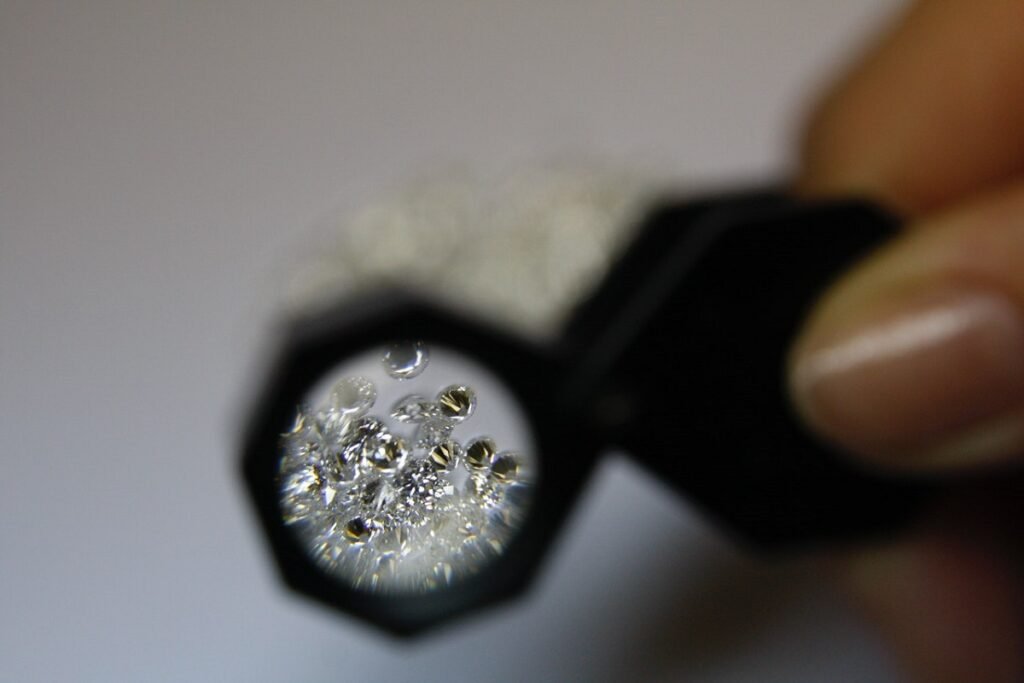
Lab Diamonds HPHT: The Future of Sustainable Jewelry
In the rapidly evolving world of sustainable fashion and fine jewelry, lab-grown diamonds have emerged as a transformative solution. Among the various techniques for creating lab diamonds, HPHT (High Pressure High Temperature) stands out as one of the most innovative and widely used methods. This article explores the science behind HPHT diamonds, their environmental benefits, and why they’re becoming an increasingly popular choice among conscious consumers.
Table of Contents
What is HPHT and How Does it Create Lab Diamonds?
The Science Behind HPHT Diamonds
HPHT stands for High Pressure High Temperature, which is a method used to create diamonds in a lab environment by replicating the natural conditions found deep within the Earth’s mantle. In nature, diamonds are formed under extreme pressure and temperature conditions, which cause carbon atoms to crystallize into the beautiful gems we admire.
In the lab, the process starts with a small carbon seed placed inside a press. The press is then subjected to immense pressure and temperature—typically between 1,300 and 1,600 degrees Celsius (2,372 to 2,912 degrees Fahrenheit) and pressures ranging from 5 to 6 GPa (gigapascals). These conditions mimic the natural processes that occur deep within the Earth, allowing the carbon atoms to crystallize into diamond structures.
HPHT Process Steps
- Carbon Seed Selection: A tiny diamond seed is used as a template for the new diamond’s growth.
- High Pressure Application: The seed is placed inside a specialized press, where pressure is applied.
- Heat Generation: The temperature is raised to extreme levels to allow the carbon atoms to bond and form a diamond.
- Growth Period: Over several days or weeks, the lab made diamonds grows around the seed, gradually taking shape and forming the desired size.
The Benefits of HPHT Lab Diamonds
Environmentally Friendly and Sustainable
One of the most compelling reasons people choose HPHT diamonds is their environmentally friendly nature. Unlike mined diamonds, which often involve harmful extraction methods and disrupt ecosystems, HPHT diamonds are created in controlled environments with minimal environmental impact. This process significantly reduces the carbon footprint associated with diamond mining, making HPHT diamonds an attractive choice for eco-conscious consumers.
Ethical Considerations
Another major advantage of lab diamonds hpht is their ethical sourcing. Traditional diamond mining has been associated with various human rights abuses, including child labor, unsafe working conditions, and exploitation. With lab-grown diamonds, consumers can have peace of mind knowing that their purchase has not contributed to these issues.
Cost-Effective Option
HPHT diamonds tend to be more affordable than their natural counterparts. While still offering the same stunning beauty and chemical composition, they cost less due to the more controlled and efficient production process. Consumers can expect to pay a fraction of the price for an HPHT diamond compared to a mined diamond of similar size and quality.
How to Choose the Right HPHT Diamond for Your Jewelry
4Cs of Diamonds: Cut, Clarity, Carat, and Color
When shopping for an HPHT lab diamond, it’s essential to consider the same criteria you would for a natural diamond: the 4Cs—cut, clarity, carat, and color. These factors determine the diamond’s overall quality and price.
- Cut: The cut of a diamond refers to how well it has been shaped and faceted. A well-cut diamond will sparkle more and exhibit superior brilliance.
- Clarity: This refers to the presence of any internal or external imperfections, called inclusions or blemishes. HPHT diamonds are often of high clarity, as the lab-grown environment minimizes the likelihood of these imperfections.
- Carat: This measures the weight of the diamond. Larger diamonds typically cost more, but HPHT diamonds can offer larger sizes at more affordable prices.
- Color: HPHT diamonds are graded on a color scale from D (colorless) to Z (light yellow or brown). Many HPHT diamonds achieve a high color grade, ensuring they look just as stunning as natural diamonds.
Certification Matters
Just like mined diamonds, HPHT diamonds should come with certification from reputable gemological institutions like the GIA (Gemological Institute of America) or IGI (International Gemological Institute). This certification guarantees the authenticity and quality of the diamond, providing buyers with peace of mind.
The Future of HPHT Lab Diamonds
Technological Advancements
The future of HPHT diamonds looks promising as advancements in technology continue to improve the efficiency and cost-effectiveness of the lab-grown diamond process. With growing demand for sustainable and ethical products, HPHT diamonds are expected to become even more widely accessible and mainstream in the coming years.
Rising Popularity Among Consumers
As consumers become more aware of the environmental and ethical issues surrounding traditional diamond mining, the popularity of HPHT diamonds is expected to soar. Lab-grown diamonds, including those created using the HPHT method, offer an attractive alternative for those who want the beauty and brilliance of diamonds without compromising on their values.
Conclusion: HPHT Diamonds Are the Sustainable Choice for the Future
HPHT lab diamonds represent the future of the diamond industry, combining advanced technology with ethical practices and environmental sustainability. By opting for these stunning diamonds, consumers can enjoy the brilliance and luxury of traditional diamonds, while making a conscious choice for the planet and supporting ethical sourcing. As more people turn to lab-grown diamonds, the industry is poised to evolve, with HPHT diamonds leading the way toward a brighter, more sustainable future.